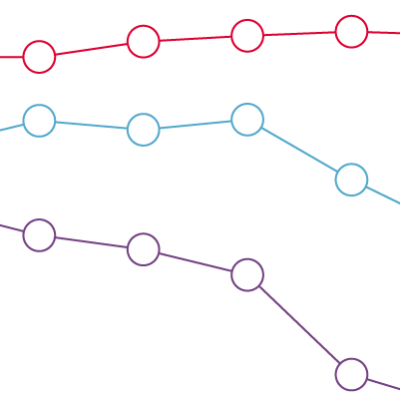
Key points
- 12% of children, 11% of pensioners and 7% of working-age adults live in households described as being in persistent poverty, which means they have lived in poverty for 3 of the past 4 years.
- There has been little change to these rates since 2010–14.
Persistent poverty is a particularly important issue for our health, because the experience of prolonged periods of poverty has cumulative effects, for example the build up of chronic stress and impact of life events over time. For example, research on child poverty found that any exposure to poverty in childhood was associated with worse health outcomes, but the effects were more severe for children living in persistent poverty.
This chart shows the proportion of people living in persistent poverty between 1991–94 and 2016/17–2019/20, with the data split between children, working-age adults and pensioners.
- In 2016/17–2019/20, 12% of children, 11% of pensioners and 7% of working-age adults were living in households in poverty for at least 3 of those 4 years.
- Persistent poverty for both children and pensioners and, to a lesser extent, working-age adults declined over the course of the 1990s and 2000s. There is a similar trend in poverty rates over this time, partly reflecting policy action taken to reduce poverty for children and pensioners.
Since 2010–14, there has been little change for any of the age groups, despite the substantial increases in employment for working-age adults over this period. This shows the limits of employment growth alone in lessening the impact of wider factors on our health.
Poverty trends highlight the important role that policy can play. A sustained effort to reduce pensioner and child poverty in the late 1990s and 2000s was effective. The lack of progress in reducing poverty in recent years shows the limits of an approach that relies on employment growth alone to support incomes and replace income lost due to social security cuts. The pandemic has highlighted the importance of a strong lifeline to support incomes.
- Persistent poverty is defined as a person living in a household experiencing poverty (a net household income below 60% of the median in that year) for at least 3 of the past 4 years.
- Income is adjusted for household size to reflect economies of scale. For example, a household of four needs more income for the same standard of living as a household of one, but not four times as much.
- Housing costs are deducted from income, to reflect that people with lower incomes in particular have fewer options for meeting their housing costs, relative to their income.
- Pensioner households are defined as those headed by a person aged 65 years or older; working-age households are those headed by a person aged between 18 and 64 years; children are dependents under the age of 19 years living in the household.
- There is a discontinuity in the time series due to a change in the data source. This prevents direct comparisons between the period before and after 2010/11.
Source: Department for Work and Pensions, Income Dynamics 2010–2020, Income movements and the persistence of low incomes 2019–20, BHPS Income Dynamics 1991–2008







